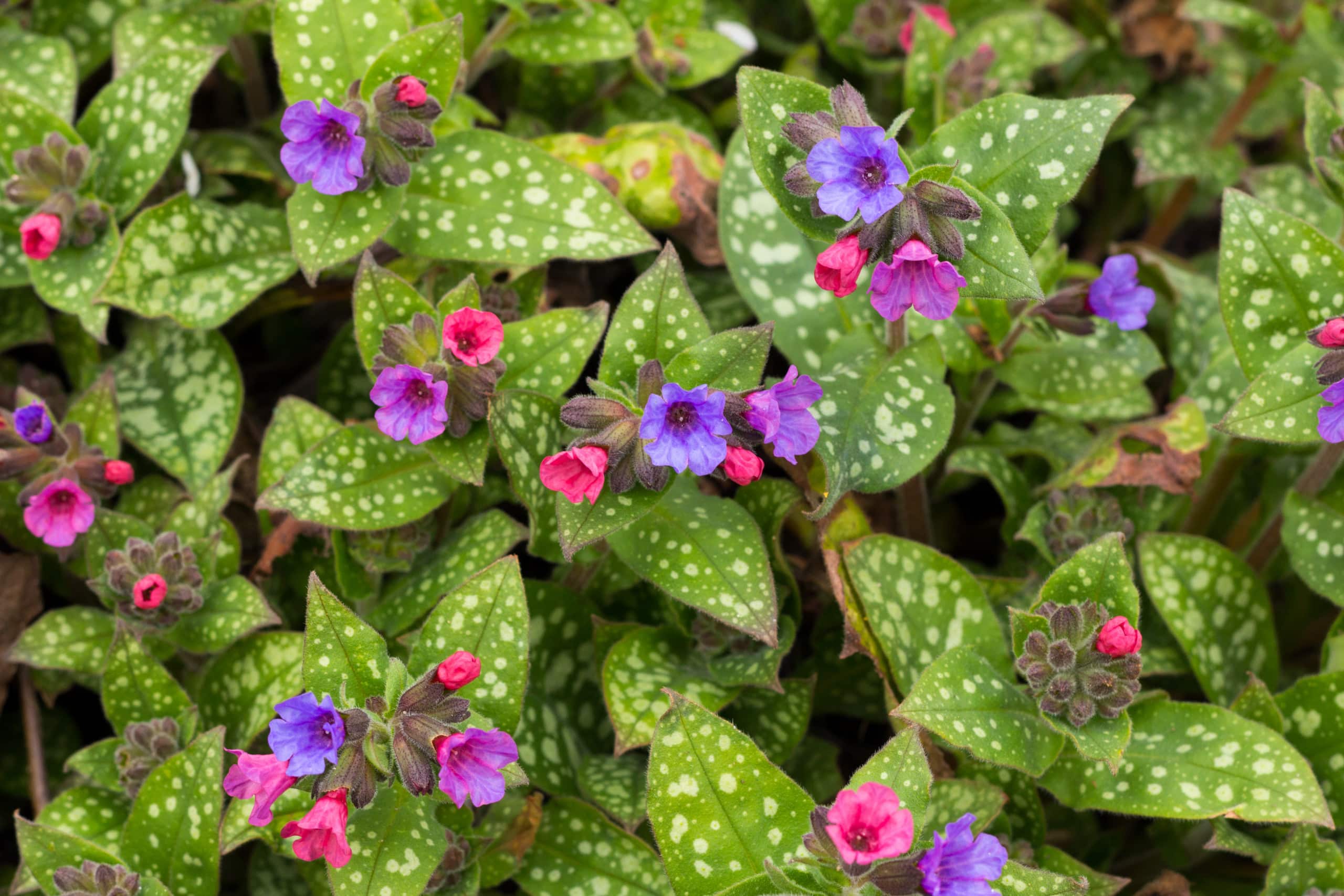Planting up your garden can be done for many different purposes. Climbers for wall cover, trees for height, shrubs in borders and bedding for pots, but ground cover plants are in a league of their own.
Keep covered

Incorporating ground cover in your garden has several advantages.
Firstly, it’s really good for the air as you can add purifying plants in a higher concentration, and this means that ambient air temperatures are also reduced.
Ground cover provides a safe haven for a wide variety of wonderful wildlife and inviting them in will increase the biodiversity in any given space.
Finally, it acts as a barrier to rainwater and potential risks of flood and it protects the condition of your soil against eroding weather, as well as surprising weed growth—so opting for this vegetation can really enhance your landscape.
Carpet of colour
Though ground growing plants or spreaders provide a shielding layer, they also give something beautiful to look at the front of borders. Many different types are as attractive as they are functional.
Periwinkle is a phenomenal spreader—plant this and run. It carpets an area with bright purple flowers that float over the dark emerald green leaves.
There are also variegated leaved varieties, which have a green and gold flush.
Available in two forms, the Vinca major variety of periwinkle has larger leaves, around the size of a two-pound coin, whilst Vinca minor leaves are about one-pound coin in size.
Both grow brilliantly in shade—so if access to sun is at a minimum, this will see you right.


Cotoneaster dammeri (bearberry) is a little plant that gives so much. Alongside its creeping effect it’s in flower during spring and the veiny leaves are dusted with clusters of small white or pink coloured flowers.
In autumn, bright red berries emerge where there once was floral decoration—with bold bursts of colourful fruits which the birds will also enjoy as a food source.
Another beautiful plant is Hypericum calycinum (rose of Sharon) which spreads but is tidy.
Upon a perfectly formed mound are bright gold star-shaped flowers with a central powder-puff of anthers.
This plant is very tolerant of most locations but thrives in a dry and sunny site.
Grounded greenery
Ivy has so much to give as a ground cover plant, but beware that once it takes grip it takes over.
So, if you can let it go it’ll work for you. As ground cover, it will frost protect bare ground and enables birds and woodland wildlife to forage for food.
Hedera colchica ‘Dentata Variegata’ is an evergreen climber with creamy margined leaves that house small yellow autumnal flowers followed by black berries in winter.
Creeping juniper will give you an evergreen effect and the variety ‘Wiltonii’ is a wide-spreading conifer that forms a blue-grey tinged matt of foliage all year round.
Else, Juniperus communis ‘Repanda’ creates a low-lying carpet of green needle-like leaves that hug to the ground and are dark green and slightly fragrant in nature. ‘Blue Star’ is another variety that has a lot to offer.
It’s not a spreader but is compact and densely growing—plus it’s detailed foliage and subtle scent makes it a worthwhile choice for adding ornate interest to baron spots in borders.

Something special

Plants that grow for purpose like this can be more than just practical additions to your growing space.
Salvia (sage), for instance, covers quickly but also has flavour for cooking into pasta and stuffing. Position in a well-lit, well-drained spot and you can enjoy the ornamental offerings this plant has to give to flower borders and beds.
The deep green, leathery leaves of Viburnum davidii is definitely worth a second look. This plant has robust foliage that works well as underplanting.
Small unassuming flowers provide colour in spring, while its unusual looking blue-black berries are present throughout autumn and winter.
It has incredibly low maintenance growing requirements, so can work with whichever space you’ve got to fill.
Euonymus fortune has evergreen interest for every occasion because you can opt for one of two colour possibilities.
Variety ‘Emerald ‘n’ gold’ has variegated leaves, meaning that the leaf is two or more shades with coloured zones or patterns. This particular variety has buttery yellow margins and is a climber—so if it reaches a fence it’ll happily grow up it.
Whereas the ‘Emerald Gaiety’ variety has a cool white margin and is bushy in the way it grows, but both have foliage which becomes charmingly tinged pink during winter.
There you have it—ground cover plants are the full package and have a lot to offer your garden spaces. Pick the right one for your desired spot and growing needs and it’ll spread a lot of perks to your plot.

Tip:
Keep the punnets your summer berries
come in. The ones with lids can be used as a warm ventilated
place to grow seedlings until they’re
ready to plant out.
Reader questions
How do I get my annuals to keep flowering?

Keep deadheading plants as the old flowers fade. This encourages the plants to produce a fresh crop of flowers. If you wish to collect a specific plant seed at the end of the season, leave a few flowers on the plants to produce seed heads.
I’m going on holiday for a couple of weeks; will my houseplants be alright?

Most houseplants can survive a couple weeks with some preparation. Water all pots before you leave. Plants in large pots will be fine left in a shady room. Those in smaller pots will do best sat in the bath on a towel soaked in water.

Leave A Comment